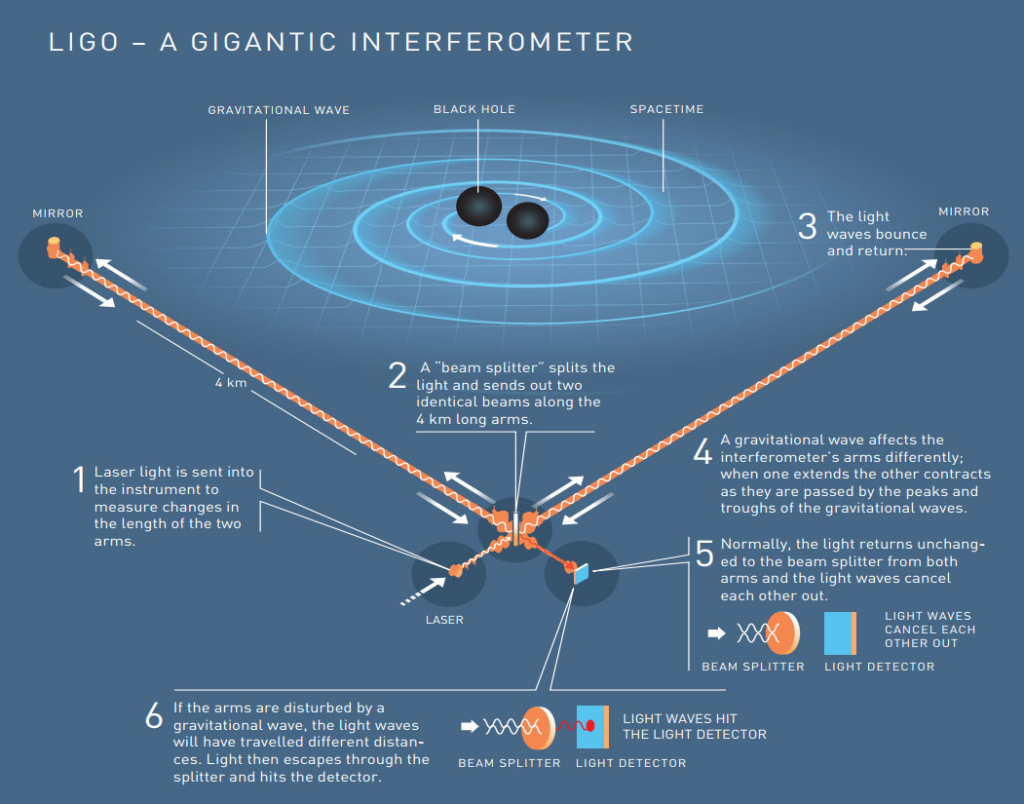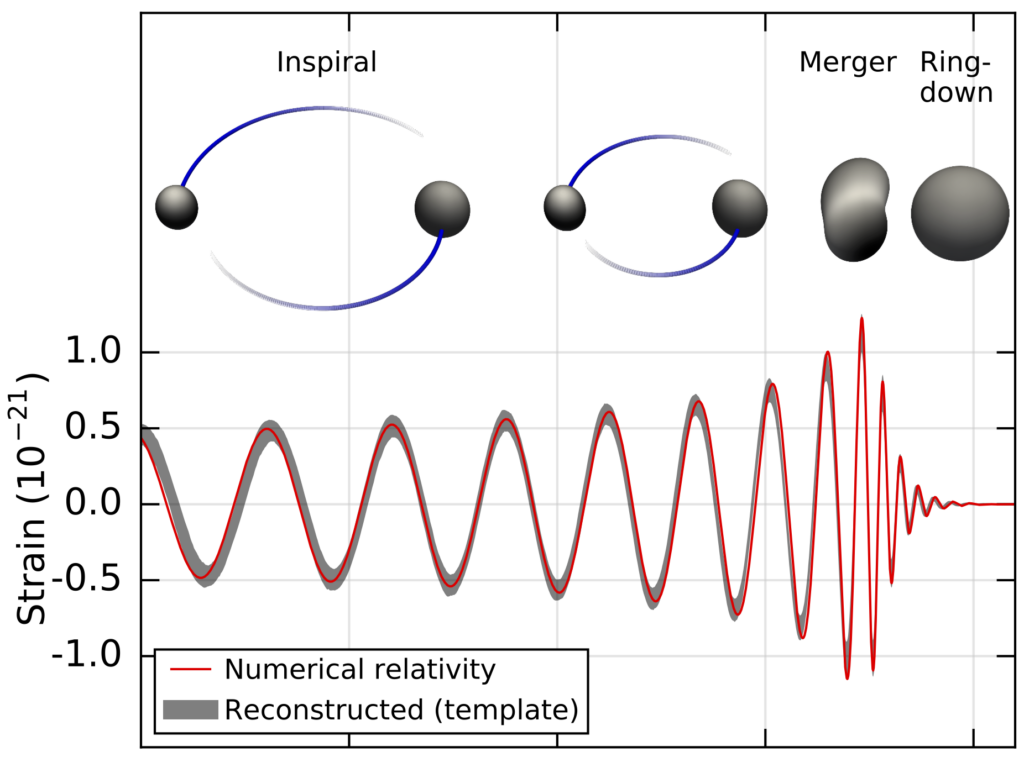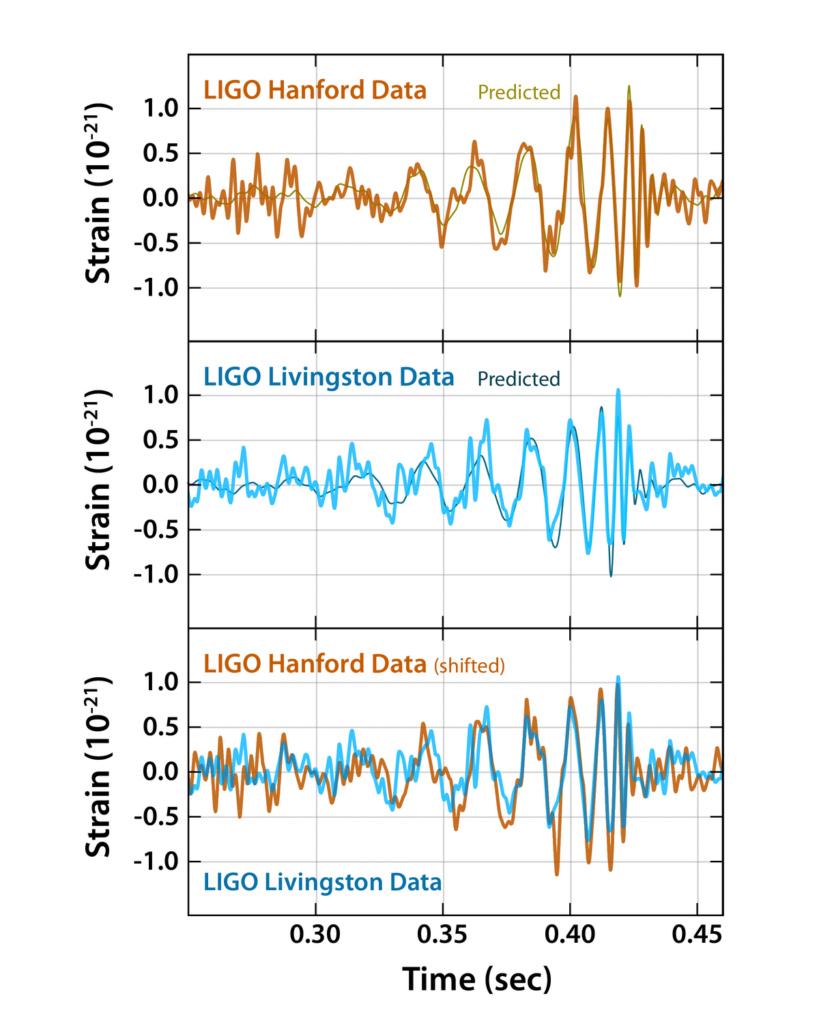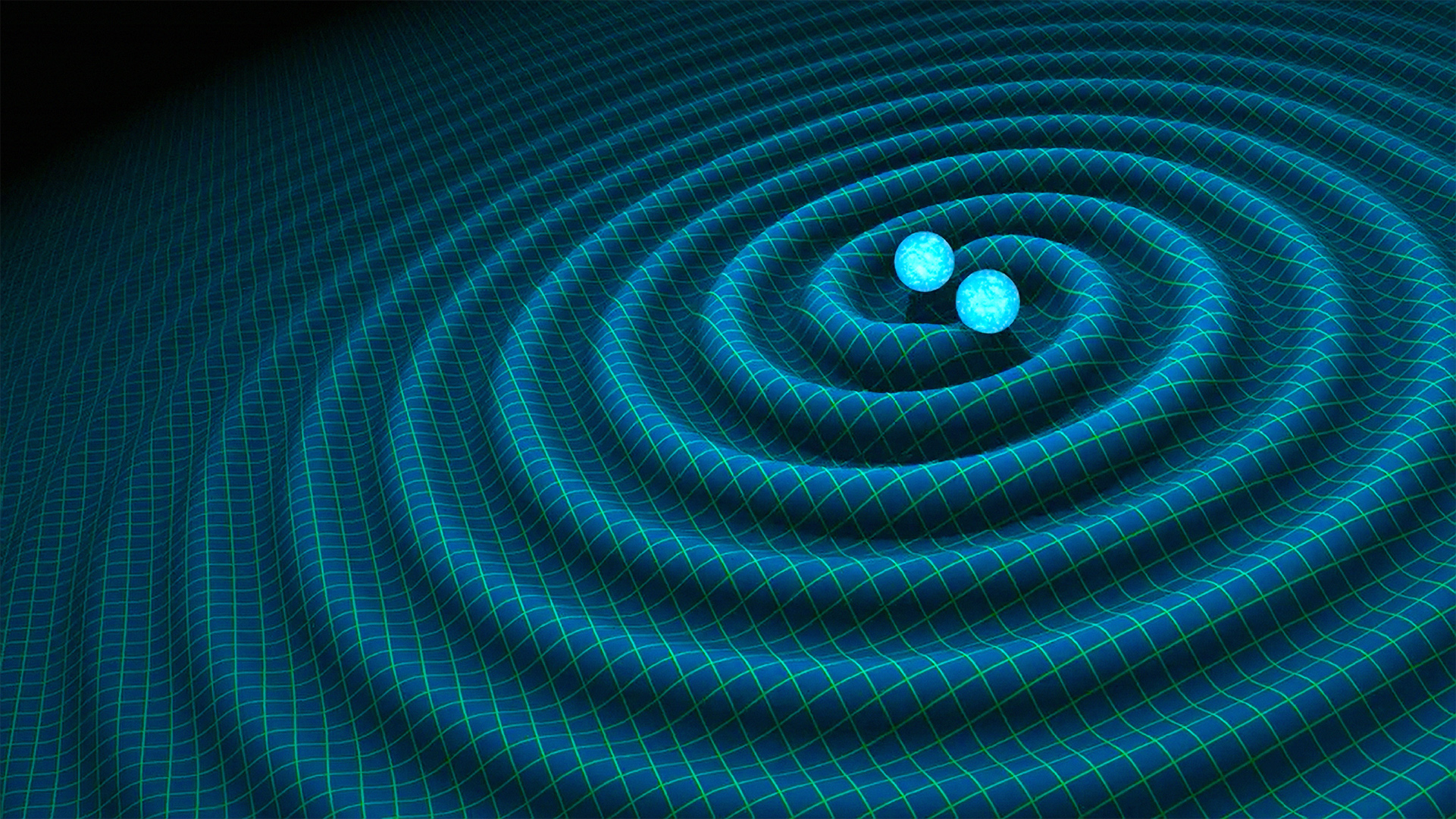Thanks to Albert Einstein’s general theory of relativity, we have known that gravitational waves exist for more than a century. It wasn’t until 2015, however, that LIGO physically detected the existence of gravitational waves caused by two colliding black holes 1.3 billion light-years away.
What are Gravitational Waves?
Gravitational waves are essentially ripples in the fabric of space-time. In the same way that disturbed water creates waves, and moving electrons create electromagnetic waves, gravitational waves are created by any accelerating mass. These waves are invisible and travel outwards from the source at the speed of light, stretching and bending anything they cross as they ripple through space.
The largest gravitational waves come from some of the most cataclysmic, high-energy events in the universe, such as merging neutron stars, supernovae and colliding black holes. In fact, the black hole collision from the first gravitational waves ever detected released 50 times more energy during the last tenth of a second, than the energy released by everything else in the observable universe combined! If you had been close enough, the immense force from the gravitational waves would have torn you to shreds.
Luckily, Earth is far from any destructive collisions, and by the time the waves reach us, they will have shrunk thousands of billions of times , which also makes them very difficult to detect. This is why in 2015, humanity achieved the impossible with the first ever detection of gravitational waves thanks to one of the largest research facilities in the world, LIGO.
What is LIGO?
LIGO stands for Laser Interferometer Gravitational-wave Observatory. Although considered an observatory, LIGO does not make observations through a telescope. Instead, it uses an optical arrangement of lasers and mirrors called an interferometer, which works by superimposing two beams of light to create an interference pattern. The interference pattern is then projected onto a photodetector so precise, that it can detect signals a thousand times smaller than the nucleus of an atom! This is the smallest measurement ever attempted by science.
LIGO consists of two university research centers at Caltech and MIT, and two detector sites in Hanford and Livingston, more than 3000km apart. Each interferometer is built in an ‘L’ shape with two arms, each 4km long. These arms were so long that when engineers were designing the detectors, they had to take the curvature of the Earth into account!

Both detector sites must work simultaneously, operating as one. This is because LIGO’s detectors are so sensitive, that they pick up on even the smallest vibrations coming from the Earth. By comparing data from two facilities that are far apart, scientists can distinguish between local ‘noise’, and real vibrations from gravitational waves. There is also another detector called Virgo located in Italy, as yet another reference point to reduce local noise.
But How Does LIGO Detect Gravitational Waves?
It is perplexing to imagine how we can measure the stretching and bending of space-time itself, but actually this is possible, and works in a similar way to how Edwin Hubble first discovered that the universe is expanding. When space-time bends and stretches, this affects the wavelength of any passing light. We know that the universe is expanding because when light from distant galaxies reaches us, it’s wavelength has been stretched by the expansion of space. Similarly, LIGO works by detecting wavelength shifts. The ‘L’ configuration was designed so that the two lasers will be affected differently by a gravitational wave. While one will extend, the other will contract, because they are perpendicular to each other. This shift will change the interference pattern, which is then detected by a photodetector.

It is also important to note that gravitational waves from a collision tend to follow an expected pattern. The waves become stronger and stronger as the two masses get closer, reaching higher and higher speeds, until the instant before the collapse, where gravitational waves reach their peak intensity, and then quickly dying down as the two masses merge into one. If you’re interested in learning more about how scientists identify gravitational wave signals, there is an amazing resource from the Gravitational Wave Open Science Center with free tutorials, data and tools for you to explore here.


On the 14th of September 2015 at exactly 9:51 GMT, the two LIGO detectors picked up the first ever signal of a gravitational wave from a black hole 1.3 billion light-years away. The signal contained the exact pattern that scientists had expected to find, and the data was almost identical in both detectors. The results were clear as day, physical proof of the existence of gravitational waves at last! Yet another proof of Einstein’s general theory of relativity, and a feat that will go down in history as one of the greatest scientific achievements of all time.
Author: Tais Loire Rosette
